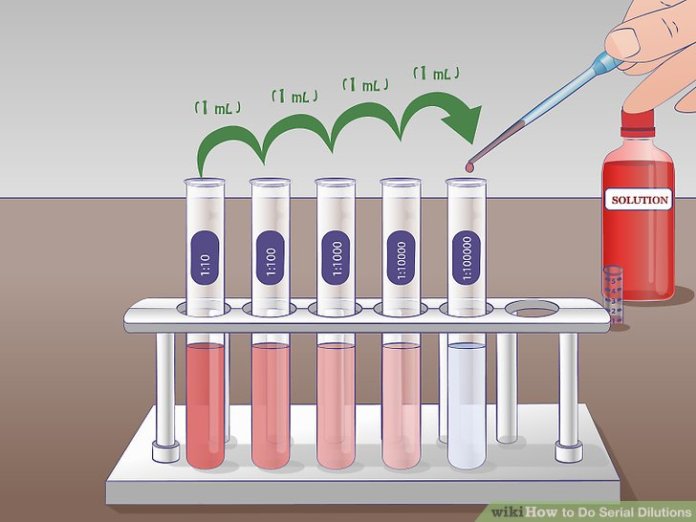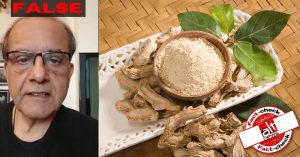Samuel Hahnemann, born on the 10th of April 1755 in Meissen, a small town in Eastern Germany was the father of homeopathy whose ideas have been documented, referred to and practised upon widely by the world’s homeopathic practitioners. He has written close to 110 books but the Organon of Medicine remains one of his most popular work.
Homeopathy is one of the key branches of the ministry of AYUSH (Ayurveda, Yoga, Unani, Siddha & Homeopathy) in the government of India. The ministry of AYUSH hosts the Central Council for Research in Homeopathy (CCRH), that has completed 40 years of establishment suggesting that, in India, the promotion of homeopathy, goes beyond the conception of the AYUSH ministry in 2014. During the course of the article, we are hoping to tackle the misconception about homeopathy being a legitimate form of medical treatment.
In the course of this article, we would like to discuss
- The principles of a modern scientific research methodology
- What is homeopathy: Its principles and mechanisms of action
- Placebo Effect: The mechanisms of action for homeopathy & other disproven treatment to work on some people, AND
- The reason for people to seek alternative medicine that does not pass the gold standard for medical treatment
Although, homeopathy is ancient, modern medical research has changed radically, and with it, its capacity to comprehend our understanding of the human body. With changing times, holding on to old research as the absolute gospel without adding any progress established with the help of new technology, not only jeopardizes human life but adds to the suffering.
As Professor Edzard Ernst, an academic physician and author of many books on complementary medicine including homeopathy, pointed out that, homeopathic practitioners “…live by (and from) the error of 200 years ago”.
A: The basis of modern scientific methodology
The modern scientific research, that has progressed and documented in the last century, has largely relied on a scientific methodology that is:
1. Unbiased: The medical researcher does not conduct studies with a pre-determined notion, that the therapy they are trying to research on, is better than other available therapies on the market. This also includes pharmaceutical companies or manufacturers with economic interests in funding the research of a given treatment.
2. Blinded: During the research of a particular therapy, studies are conducted on both healthy as well as clinical subjects (patients). Neither the medical researcher, nor the subjects, (on whom the test is conducted) should be aware of the drug study(s), or its effects, before its administration.
3. Controlled: The study, should include valid comparisons, i.e. the drug of interest compared with a non-drug (e.g. sugar pill or vehicle/placebo) to ensure that the drug has some effect- as opposed to not administering any drugs. Secondly, this new drug should be compared with the best drug in the market. In instances, where clinical trials are conducted on patients suffering from a particular type of disease, it is also unethical to let them consume sugar pills (as controls) without their knowledge for research purposes. Hence, in such instances, comparisons should always be made with the best drug available in the market.
4. With statistically significant treatment effects: Experiments that reveal statistically significant data must report appropriate statistical tests (e.g. one/ two-way ANOVA, P-value < 0.05, t-tests, etc.); with an appropriate number of replicates; appropriate error bars; and should be presented clearly in graphs or tables depicting the mean of the effect and its standard deviation (or the standard error of the mean).
5. In different conditions: The effect of the new treatment is replicated in different experimental conditions, if not, otherwise stated, so that the effect is significant enough in all conditions (e.g. in different subject groups such as gender, age groups, physiological conditions, co-treatment with different drugs)
Most importantly, it is ensured that the data for scientific validity, efficacy and/or toxicity of a treatment is replicated, peer-reviewed by external experts in the field with no conflict of interests, and recorded and shared in the form of scientific scholarly articles.
This method is used for understanding of basic sciences and mechanisms of the human body using molecules, proteins, cells, laboratory grown animals, healthy human subjects to clinical patients- and just about everything in between to ascertain whether a particular type of therapy has scientific evidence for efficacy and its toxicity.
In instances, where a treatment produces side effects, a health practitioner then concludes, if the benefits it provides outweighs the side effects of the treatment.
B: What is homeopathy: its principles and mechanism of action
In the 17th century, Samuel Hahnemann, a German physician unable to find answers with the limited understanding of modern medicine as it existed then, invented Homeopathy. This invention was before the systematic pharmacological study of drug safety and efficacy existed, before the knowledge of anatomy and physiology in its present form, microbiology and the germ theory of disease, before the invention of general anaesthesia (chloroform was discovered in 1831) or aseptic techniques and their uses in surgery.
After multiple failed experiments, he stumbled upon quinine containing cinchona tree barkdiscovered before 1570s as a muscle relaxant. He later used it to treat malaria and developed malaria like symptoms, oblivious to the other side effects and contraindications of this drug he developed the first law of homeopathy.
1. The Law of Similia Similibus Curentur (Let likes be cured by likes) Also called the Law of Similitude: drugs causing symptoms that mimic a specific disease can be used to treat diseases that causes the same symptoms.
2. The Law of Single Remedy states that a prescription shouldn’t be given of more than one remedy at one point of time. If that doesn’t work, one should move on to the next remedy. If multiple treatments are given at the same time, it becomes difficult to conclude which one treated the condition.
3. The Law of Minimum Dose states that one should take the smallest dose to nudge one’s vital force to start the healing process. Hahnemann believed that healing should be “rapid, gently and permanent.” To use too much of a remedy frequently causes an aggravation of symptoms before any improvement is seen, thereby putting the individual off the modality
4. The Law of Direction of Cure states that If a disease is left untreated it moves in the opposite direction
5. The Law of Infinitesimal Doses Under this law, homeopathy claims that when drugs such as an extract from the chinchona tree bark is diluted in water or alcohol, they increase their therapeutic potential. This is conducted by a serial dilution process such that a 1:100 dilution, i.e. one mL of drug per 100 mL of water or alcohol is repeated from 6 to 30 times to produce the most potent drug. In between each such dilution process, the liquid is agitated violently- a process that claims to activate the drug properties.
By this law, the minimum amount of potent homeopathy drug in the diluted liquid will be 1:100 ration repeated 6 times that will yield a maximum drug content with the ratio of 1:1000000000000
This means that a batch of 10,00,00,00,00 Litres of drug will contain only 1 mL of the actual drug compound, while the rest will be either water or alcohol. This diluted liquid, mostly water or alcohol is poured over small glucose balls that are to be consumed several times a day.

Treating symptoms not diseases:
Since the conception of this therapy was before the understanding of many physiological mechanisms or biological functionality, and as a disease was perceived as a symptom in singularity, not as a manifestation of a bigger disorder- it was believed that treating the symptom can make the disease disappear.
Ironically, homeopathy also has the theory of disease with three miasms, which are responsible for all human diseases and the treatments should be directed at treating these problematic miasms as a root cause:
1. SYCOSIS: conditions worsened by damp weather and the sea.
2. SYPHILIS: diseases of the nervous system such as a range of psychological illnesses such as alcoholism, depression, loss of sensations, ulcerations; the blood and skeletal disorders like heart conditions etc
3. PSORA: diseases of a chronic nature, all skin diseases, mental illness other than syphilitic ones, allergies, varicose veins, haemorrhoids, most dysfunctional diseases of organs and systems, etc.
Hence, each symptom is addressed instead of looking at the root cause of treatment- which the homeopaths claim to treat. e.g. Pain is a symptom of many disorders from cancer, diabetes and musculoskeletal disorders to injury and trauma. Treating the pain will not address the diabetes in a diabetic neuropathy patient as it has to be dealt with mechanistically.
C. The mechanism of action of why homeopathy or other disproven treatments works on some people
A practice of validation through repetition of 4-5 doses a day, may induce a placebo like effect- something that may be holding the value of homeopathy till this date. A “placebo effect” is something that can seem like a real treatment but it isn’t. Such treatments do not contain any active substance to produce a change in effect but they still do, sometimes, in some people.
There is a large amount of research and theories constructed for the placebo, one of them is of the mind-body. In theory, these placebo therapies rely on a patients’ expectation of a treatment. The higher the expectation, the higher the change of a placebo effect to occur. Notably, it is a chance phenomenon, and in cases of critical conditions and in professional medical practice, luck or chance has little space or value.
However, in conditions where side effects of the drugs are high, placebo therapy can improve treatment and lower the cost of treatment at the same time. Nevertheless, it is controversial, as for patients seeking medical treatment, it can be unethical to give placebo without their knowledge and where patient is expecting a working solution. At the same time, placebo may not work when a patient knows it is placebo.
Placebo is one such explanation of how homeopathy may have worked in some people.
Several highly reputable scientific journals such as the list below have published studies that confirm time and again that the homeopathy method of treatment may work as placebo and there may not be any scientific basis for it.
- Shang, Aijing, et al. “Are the clinical effects of homeopathy placebo effects? Comparative study of placebo-controlled trials of homeopathy and allopathy.” The Lancet 366.9487 (2005): 726-732.
Conclusion: Biases are present in placebo-controlled trials of both homeopathy and conventional medicine. When account was taken for these biases in the analysis, there was weak evidence for a specific effect of homoeopathic remedies, but strong evidence for specific effects of conventional interventions. This finding is compatible with the notion that the clinical effects of homeopathy are placebo effects.
- Nuhn, Tobias, Rainer Lüdtke, and Max Geraedts. “Placebo effect sizes in homeopathic compared to conventional drugs–a systematic review of randomised controlled trials.” Homeopathy 99.1 (2010): 76-82.
Conclusion: Placebo effects in RCTs on classical homeopathy did not appear to be larger than placebo effects in conventional medicine.
Also, the Australian NHMRC, Australian National Health and Medical Research Council, after analysing over 1800 scientific papers has concluded that homeopathy “relies on super-diluted substances” and has given the final verdict on the ineffectiveness of homeopathy as a treatment based on evidence based practice in a variety of clinical conditions. In essence, it concluded that there is no scientific basis for homeopathy and no quality evidence of its efficacy.
D: The reason for people to seek alternative medicine that does not pass the gold standard for medical treatment
As discussed above, with very little active ingredient and effects largely based on placebo, treatment with homeopathy is bound to have very little side effects- apart from spiking up the blood glucose in small amounts.
As an informed consumer of medical therapies, one must ask several important questions, such as:
Why do people still use homeopathy or other disproven therapies if they fail at substantiating their claims for a scientific mechanism?
The answer to this resides beyond the scope of a scientific understanding of a diseased body. It lies in;
1. The economic model of the health system: In a largely privatized health industry such as in India, homeopathy (consisting mainly of water/ethanol and sugar) is much cheaper as a treatment when compared to modern therapy.
2. In the expectations of patients created by alternative practitioners: False claims that suggest complete eradication of a disease (e.g. autism) through alternative treatments which is not achievable through modern medicine yet, and;
3. The role of government: To oversee that such misinformation, fallacies and unscientific research methods are not a part of the official public health system, i.e., propagated through official sources and government ministers.
In India, the Ministry of AYUSH has a Central council for research in homeopathy (CCRH), a fully funded government body to conduct research in homeopathy- a research area that has been increasingly pushed into mainstream medical science since the ministry was formed in 2014.
In this year alone, the current government has outrightly promoted these alternative therapies by increasing 13% funding to the existing AYUSH budget. Also, since 2014, the government has created a separate ministry for AYUSH which is independent of the health ministry. Moreover, by trying to introduce the crosspathy bill, where AYUSH practitioners can practice basic modern medicine, the govermnt is legitimizing the practice of non-evidence-based practice such as homeopathy. In other departments of AYUSH as well, the emphasis on the scientific methodology of research is absent and elaborate claims are made to suggest fallacies not just in medical sciences but also in other sciences, something that even Hahnemann as a physician may disprove of.
Conclusion:
Understanding the basic principles of homeopathy, in particular, the law of infinitesimal doses, it is clear that the medicine does not contain enough drug to treat any disorder, i.e. it either consists largely of water or alcohol, poured over sugar balls. While thoroughly researched evidence-based pharmacology suggests the optimum drug dosage in the body is a major contributing factor for drug efficacy. Therefore, according to the modern scientific explanation, these homeopathic drugs simply should not work based on a mechanism, but may work, for some, as a placebo. Thus, the inconsistent homeopathic efficacy in some ailments, as we observe in some patients, can only be attributed to its placebo effect.
Independent journalism that speaks truth to power and is free of corporate and political control is possible only when people start contributing towards the same. Please consider donating towards this endeavour to fight fake news and misinformation.




